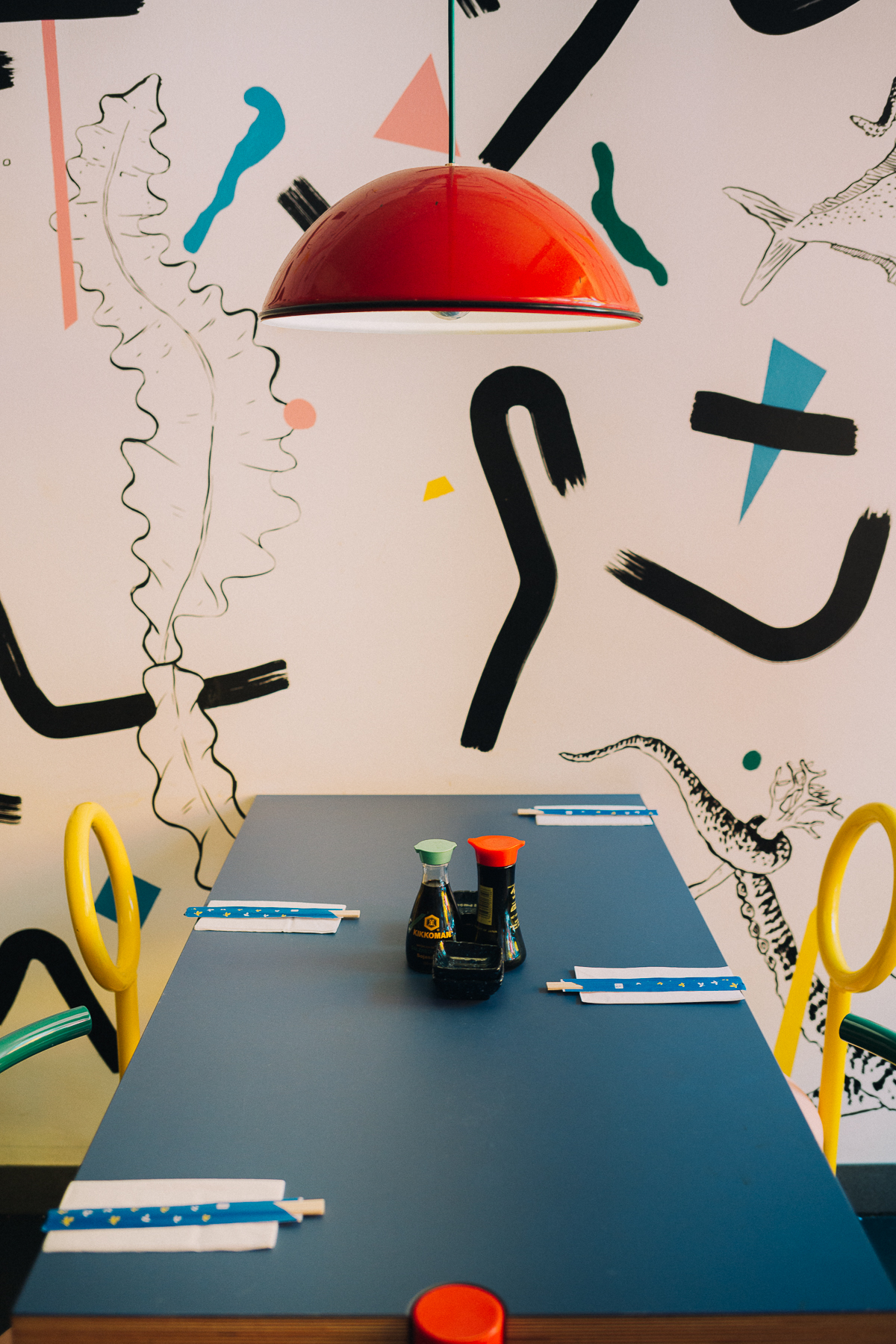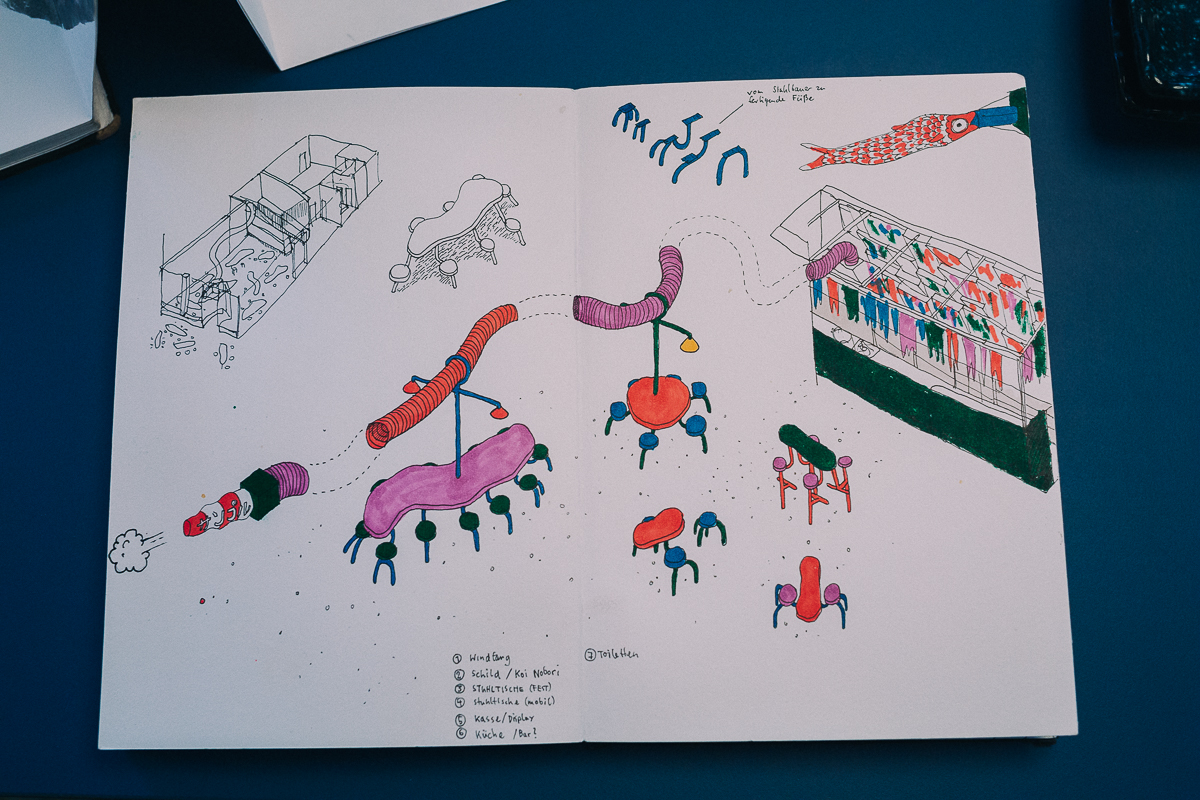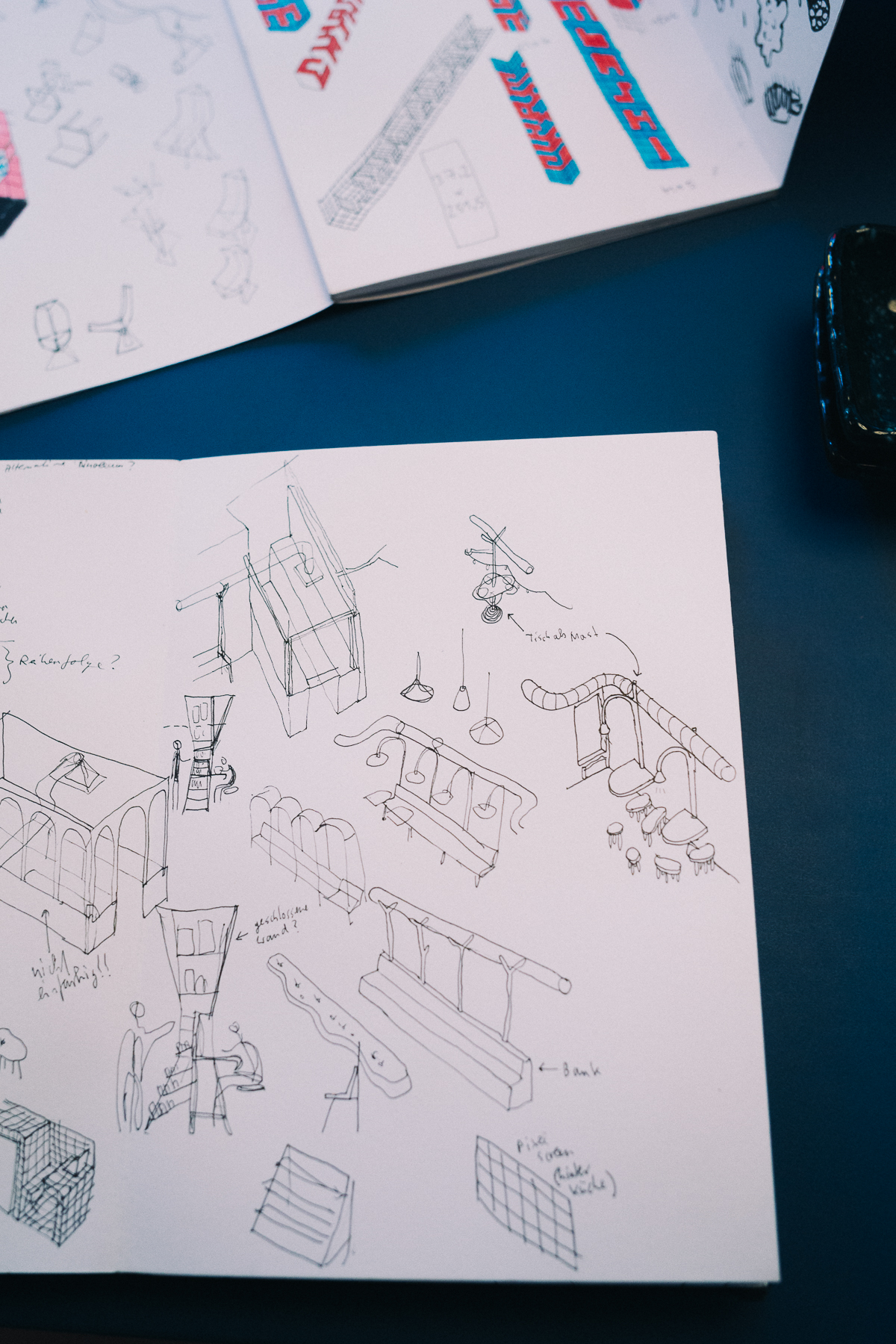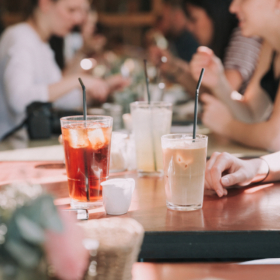Back when the weather was still above freezing temperatures, we popped over to Nihombashi to chat with the gang about the Japanese restaurant:
LFB: Can you please tell us a little bit about yourselves and how you got started in your trade?
Afon: I grew up in China and was sent to West Berlin at 15 years old. I didn’t continue education because I had reached that age, instead I started working at my aunt’s restaurant in Spandau. Food culture is very, very important for Chinese people. For me, that was all I had, soon enough I had it in me to try and open my own restaurants. Sometimes they were going well and sometimes not so much, but I always kept at it, trying to improve and make my way ahead.
Axel: I was running a Portugese café not too far away from Nihombashi. As I often ate at Toca Rouge, a new restaurant that was always packed, I came in contact with the owner, Afon. From that point onwards we ended up opening quite a few restaurants together as a team.
Afon: I always wanted to open a sushi restaurant in the past and eventually took some time to visit Japan for research and inspiration. Soon after, we had a moment of opportunity when a “Späti” in the same neighborhood as Yumcha moved out, leaving the perfect space available to us.
Peter: I had recently graduated in architecture with Yana, but I was doing exhibitions and films when a friend told us that Afon and Axel wanted to open a Japanese Restaurant and were searching for someone to do the interior.

Photographer: Rae Tashman

Photographer: Rae Tashman

Photographer: Rae Tashman
LFB: Can you tell us how Nihombashi came to be?
Afon: It was a dream we had for a long time to open a Japanese Sushi Restaurant.
Axel: We didn’t want to reinvent a lot of dishes, but to offer good quality Sushi with more choices for vegan and vegetarian people than what you usually see – particularly in Berlin.
Afon: Right, with a touch of South-American flavor as well. They work a lot with seafood and there is the spicy element to everything. Nihombashi serves Sushi as well as Kushiyaki. Sushi being a cold menu, we decided it would be interesting adding something hot too
Axel: Kushiyaki in particular inspired Afon a great deal on his Japan trip – fish, meat and vegetable skewers.
Peter: On the initial meeting I had with Afon regarding the interior design, he had something in mind, in essence a very classical Japanese idea. Rather white, and bamboo. Japan is not only about zen minimalism and I presented a book about Metabolism when we first met at Expo 1970 in Osaka. We also looked at the Italian-Japanese design group, Memphis. After discussing these ideas, Afon gave me the Carte Blanche.

Vincci, Malaysian-Chinese from Kuala Lumpur who once studied film before meeting Afon six years ago and becoming his personal assistant. Photography: Rae Tashman

Peter, born in Berlin. Studied architecture at University of the Arts, partaking mainly in exhibitions, interventions and films until he met Afon. Together with his fellow student, Yana Kyuchukova, he became responsible for the whole concept, spanning from the architecture, to the design of furniture , graphics and illustrations. Photography: Rae Tashman
LFB: What sets your Nihombashi apart from other establishments here in Berlin?
Axel: We concentrate on creating good sushi, and offer vegetarian as well as vegan rolls with Himalayan wild rice. We have quite a variety of good Sake on offer. We love figuring out how to create a match with the actual eating experience and the surrounding space.
Afon: It’s all linked, we like that idea.
LFB: Nihombashi is a part of a larger group of restaurants, can you guys explain how this works and what other places are part of your brand?
Axel: It’s not exactly a brand, each of our restaurants have its own kitchen, its own character, spirit and specialities.
Afon: It’s like, we are the parents and as parents you wont ask yourself which kid you like the most, but you care for them all independently as their own.
Axel: You love working on them all simultaneously, and you see their strengths.
Afon: It’s also not that we share everything per se. Axel’s ‘Galão’ and my ‘Toca Rouge’ are run completely independently.

Drawings from Peter’s sketchbook. Photography: Rae Tashman

Drawings from Peter’s sketchbook. Photography: Rae Tashman

Drawings from Peter’s sketchbook. Photography: Rae Tashman

Drawings from Peter’s sketchbook. Photography: Rae Tashman
LFB: The interior design of a restaurant or cafe is as important to the overall experience as the presentation of food and drink. Can you tell us a little bit about this in relation to your own establishment?
Vincci: Of course you’re right, it all goes together!
Axel: You do have to consider everything; the fragrances, the light, the colours. The way you’re seated and the space that surrounds you. The graphic design, the menu. The whole physical experience of dining is as important as the food being served. After entering the restaurant and taking a seat, there is plenty of time to discover what is around you. Peter and Yana have made quite a lot of things to discover.
Peter: Offering the “authentic” stereotype was not a real option for us. We are on the other side of the globe so why should a Japanese room suddenly appear in a German building. We had another Japan in mind, and decided to rather play with Japan as a promising fiction. Also, we didn’t want to create something that is nice, sleek and cool, but something that is different. Axel and Afon were then crazy enough to let us put up strange obstacles, and create a space that people first would have to learn before getting along with. Some parts are super dysfunctional, but instead of eliminating possibilities, they are creating new functions and thus new behaviours.
Peter, can you tell us a little bit about the story of how you came to work with the team and the evolution of the design of Nihombashi?
Peter: When Yana and I entered this space for the first time (which was previously used as a “Späti”) – it was totally boring. As an architect, you are always looking for something interesting to work with. Something that triggers a reaction. In this case, the whole space was absolutely nondescript. You could have ridden down the street a hundred times and you wouldn’t have registered it once. But when we took down the suspended ceiling, we found an exaggerated concrete ceiling with beams that would actually be able to hold a motorway, so we tried everything to keep the whole ceiling visible. That is why the kitchen, as well as the toilets are standing in the space like little houses in a city. All of them having funny roofs under a dark concrete sky.
Another problem was the exhaust, which had to run from the kitchen to the street. We decided not to hide the big metal pipes, but turn them into something important. I read that in Japan people usually put up wind puppets called “koinobori” on children’s day. So we added a giant 3 meter long fish to the ventilation pipe, lit from inside and dancing in the wind it became a living beast visible from far away. Whenever children passed by they were pointing to the fish long before their mothers and fathers even noticed.
‘Nihombashi’ – the name of the restaurant – is actually referring to a place in Tokyo, the oldest bridge in the city’s center. When traffic was congesting Tokyo in the sixties, expressways were built hovering over rivers as the land prices exploded. So the picturesque old bridge, Nihombashi, was bridged over by a giant motorway – decapitating its chandelier street lights.

Photography: Rae Tashman

Photography: Rae Tashman

Photography: Rae Tashman

Photography: Rae Tashman
LFB: The design is so playful and also has lots of elements of Memphis design. Can you elaborate on this? How does this tie in with the food itself?
Peter: Japan is known for many things. First of course, the food, then there is this precision, perfectionism and minimalism when it comes to small machines, fashion design and architecture. But, on the contrary, there is the daily life where electric cables are not buried but hang around in bundles like a giant spider web. This colourful, noisy, flashing life on the streets. When I met Afon, he had something rather minimal in mind and I showed him images of metabolist buildings and Memphis. While Metabolism was a Japanese architectural movement aiming for a better society living in cities as big machines, the Memphis group was a design collective that introduced playfulness to design. A lot of colours, a lot of forms, a lot fun. When we started to design the space and the furniture, we set up two rules; it had to fun and it had to be intense.
The whole idea of serving sushi and kushiyaki – both dishes that are rather like edible jewelry; colourful and sometimes bizarre objects that need to be created in the very moment somebody is ordering them – this food does very well together with the playful space that surrounds it.

Photography: Rae Tashman

Photography: Rae Tashman

Photography: Rae Tashman
LFB: Why Berlin?
Axel: We are in Berlin. We are all Berliners.
Afon: I came here when I was 15 years old. I caused too much trouble in China and so my parents sent me here for discipline.
Vincci: Then of course he became a Chinese Punk and a chef.
Axel: None of us were born here but we are all brought together by this city. That’s why it’s Berlin.
LFB: Can you tell us a bit about what it is like to run multiple restaurants yet still be a small business and not a giant chain?
Afon: We’re not fans of copying ourselves.
Axel: It is so much fun to see your restaurant grow – we’re rather addicted to starting an entirely new project, it’s always more rewarding than to copy ourselves.
Afon: We’re a bit like painters, we try to do something different all the time, but you might still recognize who made it.

Photography: Rae Tashman

Photography: Rae Tashman
LFB: What is the best part about being a small business in Berlin?
Vincci: Everybody feels part of the family. Everybody has an important role. We’re all eating together on one table, the chefs as well as the dishwashers and both of the bosses.
Axel: That’s because Afon used to be a dishwasher (laughs)
What is the hardest part about being a small business in Berlin (and in general)?
Axel: This city is about experimentation and so it’s been easy to try something new because the rent has been cheap everywhere. This has pretty much gone by now, but more people like to spend more money on what they eat so the food scene has exploded exponentially.
Vincci: Our customers are very much up for this experimenting. Social media has made it very easy for small businesses to reach a lot more people quickly without the typical lengthy struggle.
Peter: There is no more “Geheimtipp”, those little secret spots that only people from the neighborhood know. With social media, the neighborhood became the world.

Photography: Rae Tashman

Photography: Rae Tashman

Photography: Rae Tashman
LFB: Can you tell us what you think about the relationship between local and corporate? Is there a way for consumers as well as producers big and small to work together?
Peter: All of this is happening together in a big city. There are local businesses and corporate ones, there are producers and consumers. There is a term called “Kreuzberger Mischung” saying that production and consumption, living and working is taking place in the same neighborhood. I think it is about maintaining and balancing the mixture of most different ingredients to keep the city interesting and alive.
LFB: Should consumers always support local food establishments first?
Axel: Of course. Supporting local producers is good for the environment, it saves local jobs and strengthens the spirit of the neighborhood.
Afon: You can’t tell people not to go to global food chains. That will result in the opposite and people will go there because it is forbidden.
Axel: There is a lot of local food in Berlin and people like to eat there not only because they have to but because the food is just way better than American fast food chains, for example.
LFB: How many years have you been doing what you do?
Afon: 30 years.
Axel: Yeah, and he is not an elderly gentlemen just yet.
Afon: I started when I was 15 and I started at the restaurant my aunt ran in Spandau, washing dishes as Axel mentioned earlier.
Vincci: 10 Years.
Peter: This is actually the first restaurant that we did.
LFB: What kind of advice do you have for people who want to start their own business in the hospitality industry?
Axel: Just do it!
Afon: Dare to fail. Learn from the mistake and start again!
LFB: What kind of advice do you have for people who have already started their own business in the hospitality industry but are struggling?
Afon: Same advice. (laughs)
–
photography by: Rae Tashman
More about the team at Nihombashi:
Axel Burbacher and Guan Guanfeng (Afon):
The owners of Nihombashi, Axel and Afon, derive from South Germany and China. They were both successfully running their own restaurants in Berlin at the time of meeting each other around 10 years ago before deciding to open a new restaurant together. ‘Yumcha Heroes’ was the beginning of a long partnership and the aim was to provide Berlin with handmade Chinese dumplings and other traditional treats. In 2016, they decided to reignite an old dream and create a Sushi restaurant and so ‘Nihombashi’ was born.
Follow Nihombashi on Instagram and Facebook. Check out Peter Behrbohm online.
![]()





